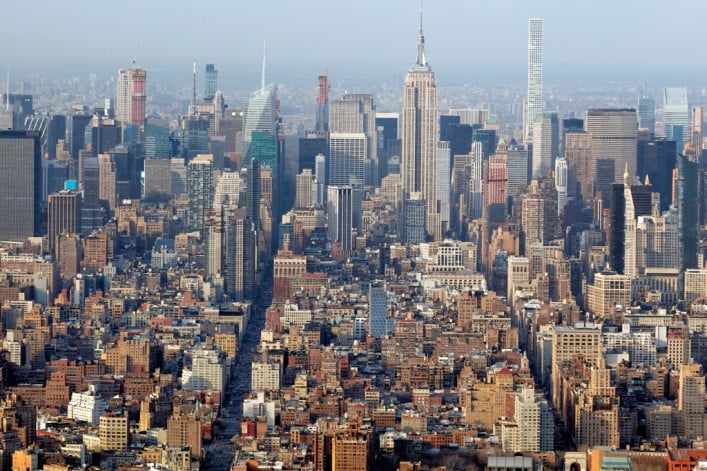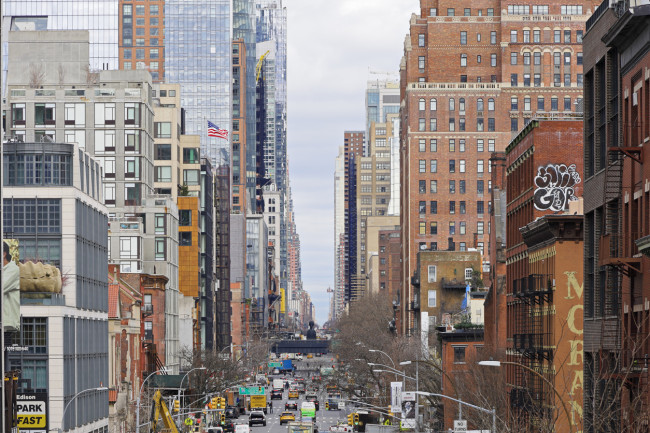A spring market on ‘steroids’: Lower NYC rents fueled record demand in April

This year the spring market has been supercharged with record-level lease signings in Manhattan, Brooklyn, and Queens last month.
iStock
There were record numbers of new leases signed last month in Manhattan, Brooklyn, and Queens—and you would think that with so much demand, landlords would have raised rents significantly, but that’s not what happened.
April marked the highest total number of new leases signed in each of the respective three boroughs since the Elliman Report began tracking monthly rental activity in Manhattan (2008), Brooklyn (2009), and Queens (2011). That's partly due to the calendar—spring is the traditional rental season, after all. But that’s not the full explanation: This year the spring market has been supercharged, or as Jonathan Miller, president and CEO of appraisal firm Miller Samuel and author of the report, calls it: “seasonality on steroids.”
The heavy rental activity is not stabilizing falling rents, it is happening because of falling rents, Miller says. “It shows how much vacancy there is,” he points out. Landlords have so much inventory on their hands that renters can expect that “this will be the narrative for much of 2020,” he says. That’s good news for renters.
In Manhattan, there were over 9,000 leases signed last month, almost twice as many as the previous month and far more than the 1,407 leases signed in April 2020, the first full month of New York City’s shutdown.
(Comparing the current market to the same time last year, which is how you typically chart growth, doesn’t work right now. All data points appear greatly exaggerated when you contrast them with what happened during the pandemic, so some month-over-month comparisons are included here.)
Manhattan’s median rent, $2,975, fell 4 percent compared to the previous month and dropped 18.5 percent compared to April 2020, and the net effective median rent, which reflects concessions, showed the second-largest, year-over-year decline in more than a decade.
Demand for apartments sparked small increases in rent in Brooklyn and Queens but rents are still far below levels seen in April 2020.
In Brooklyn, the number of new leases (2,175) eclipsed the previous month (1,269). The median rent, $2,730, was up 1.3 percent compared to the previous month and down 16.2 percent compared to April 2020.
In Queens, new leases (570) were more than triple the previous month (176) and more than five times the level seen in April 2020 (100). The median rent ($2,581) was up 7.5 percent over the previous month and down 13.1 percent compared to April 2020.
Somewhat astonishingly: Manhattan’s vacancy rate was 11.6 percent in April. It’s been stalled above 11 percent for three months, compared to 2.42 percent in April 2020.
And despite the increase in demand, landlords didn’t pull back on concessions last month either. According to the report, 48 percent of new leases in Manhattan came with a concession like months free or an owner-paid broker fee, compared to 34 percent the previous month. This was just short of the record set in January.
There were similar upticks in the percentage of new leases that came with concessions in Brooklyn (38 percent, up from 31.4 percent in March) and in Queens (53.9 percent, up from 35.8 percent in March.)
Other market reports
The Corcoran Group released its Manhattan and Brooklyn rental reports. In Manhattan, lower rent rates are encouraging renters to return to the city or trade up within the city, the report says. Midtown East and the East Village had the highest vacancy rates while Greenwich Village/West Village and Chelsea/Flatiron and Gramercy were tied for the lowest.
In Brooklyn, the biggest year-over-year increases in new leases signed were in the neighborhoods of East Williamsburg and Carroll Gardens/Gowanus/Red Hook.
“As a result of rents plateauing at more affordable levels, home seekers have seized the opportunity to move to an apartment with more square footage, to a building with more amenities, or to a neighborhood they consider more desirable. This rise in tenants looking to upgrade, coupled with the city’s reopening as vaccination rates climb, has caused leasing activity to soar,” says Gary Malin, chief operating officer at The Corcoran Group.
MNS released its January rental market reports for Manhattan, Brooklyn, Queens, and the Bronx. The reports drill down to look at rents by apartment size and neighborhood—and compare doorman to non-doorman buildings in Manhattan. Findings include: The largest monthly decreases in Manhattan rent were for non-doorman one- and two-bedroom apartments in Soho, and doorman one-bedroom units in Soho.
You Might Also Like



























